The Cumbrian art restorers working on Banksy originals
- Published

Banksy's Sandcastle Girl was removed from the wall of a shop and moved to Carlisle
The elusive artist Banksy is known worldwide for his graffiti. Removing and preserving his works from walls and pavements is a costly and painstaking business. The BBC has been to visit some of the restorers preserving his art for future generations.
Chris Bull reckons he and his team have saved "dozens" of Banksys.
His Fine Art Restoration Company works with all sorts of masterpieces. They deal with traditional portraits - and landscapes dating from the early-13th Century - to street art spray-painted on concrete and brick.
Their latest project saw them restore a piece that appeared in Lowestoft, Suffolk, two years ago - Banksy's Sandcastle Girl.
The image, confirmed as one of the works making up the artist's 2021 Great British Spraycation, shows a young child digging up the pavement with a crowbar.
The team in Carlisle worked on its restoration ahead of it going on show back in Suffolk next month.
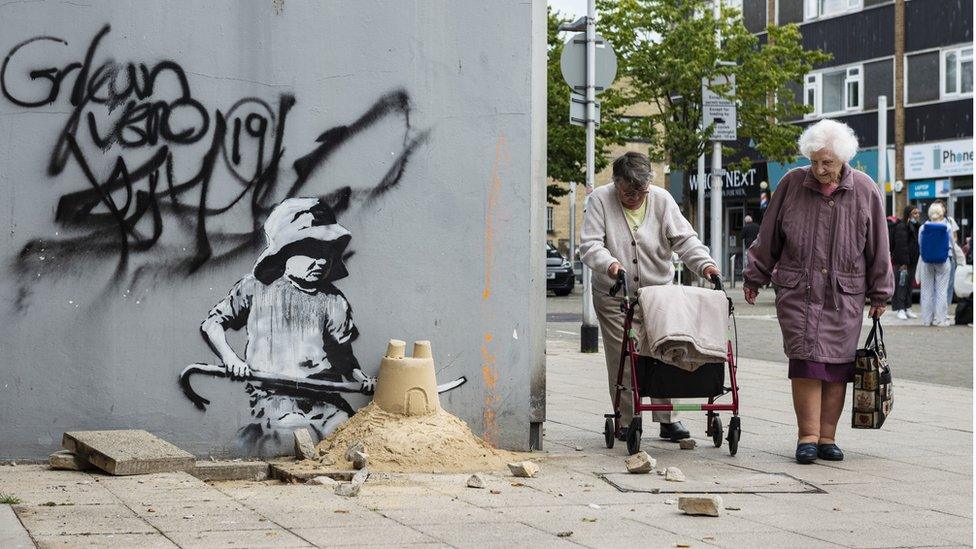
Banksy confirmed he was behind Sandcastle Girl - one of a number of artworks - found in Suffolk in 2021
Most of the restoration work comes from private individuals or from businesses and local authorities on whose buildings the artworks have appeared.
In 2018 the Cumbrian team worked for five months restoring some early works by Banksy which were mistakenly painted over with grey emulsion in 2007 in a Glasgow nightclub.
The murals, featuring a gun-toting monkey in a tutu and a framed Mona Lisa, were painted over and then left after the club went into administration in 2015.
The team either restores the work in situ, like in Glasgow, or it can be taken off a building and brought to the studio.
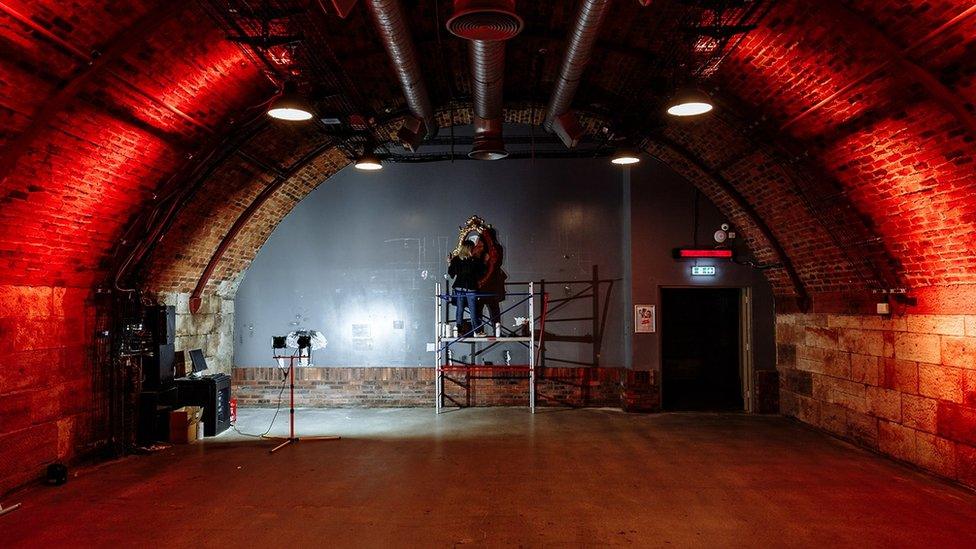
The murals, featuring a gun-toting monkey in a tutu and a framed Mona Lisa, were painted over in a Glasgow nightclub
The team have also worked on further Banksy pieces, such as Heart Boy and Happy Choppers.
"Because they are street pieces, they are put up quickly with the best consideration given to the location to get maximum publicity," says Mr Bull.
"So they are often on dirty and contaminated walls.
"If you owned a valuable painting you'd keep it inside, in correct lighting and temperatures but outside art is open to all the elements - whatever the weather - along with grime, plant life and dog wee."
Once transported to the industrial unit on the outskirts of Carlisle, conservators start work cleaning up the surfaces using solvents and other methods to find the most suitable way of removing dirt.
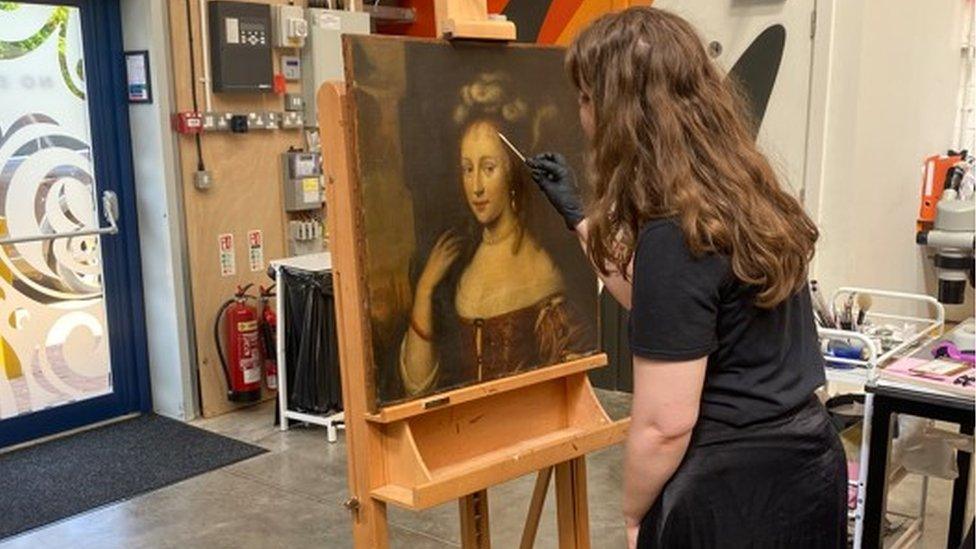
Most of the conservators were employed after an internship at the company while at university
Most of the team have ended up moving to Carlisle after graduating from Northumbria University or the Courtauld Institute of Art in London.
One of them - Sophie Kean, an "easel painting conservator" - assesses the artworks, checking for damage.
She says she gets "up close and personal" with a variety of works, recommending treatments such as surface cleaning or taking off layers of discoloured varnish.
"I can be working on something from the 1500s and something that was painted two years ago - both at the same time," she adds.
"Most people see these things at a distance or behind glass, so to have a hands-on role in preserving them for the future is a real responsibility but also a privilege."
Not confined to contemporary and traditional paintings the team is also involved in the conservation of furniture and ceramics.
The business was bought by Mr Bull and his wife and fellow director Anna about 16 years ago.
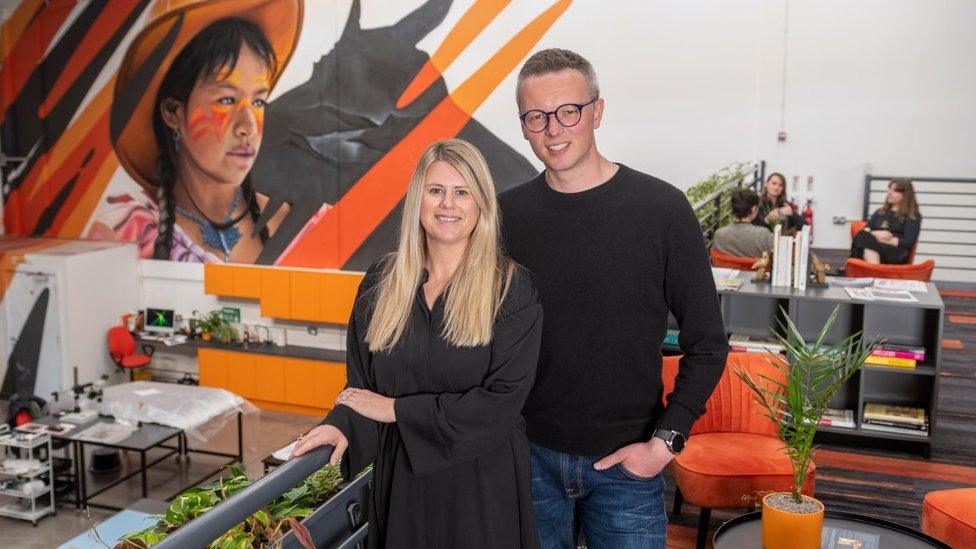
Anna and Chris Bull have seen their business grow from two employees to about 30
The couple also have a studio in London but say the majority of the restoration work is carried out on the Kingmoor site, which they said offered the team a bigger and more cost-effective space.
"I'm most pleased about doing it in Cumbria and bringing artworks to Carlisle years after the region was famous for the Arts and Crafts Movement in the Lake District Arts and Keswick School of Industrial Art," says Mr Bull, who has lived in Cumbria almost all his life.
"To bring all the artworks and conservators with specialisms from all over the world here to work in Carlisle is fantastic."
He added the team had built up a "niche specialism" in restoring Banksys, adding an "iconic piece" from the artist was due to arrive over the summer.
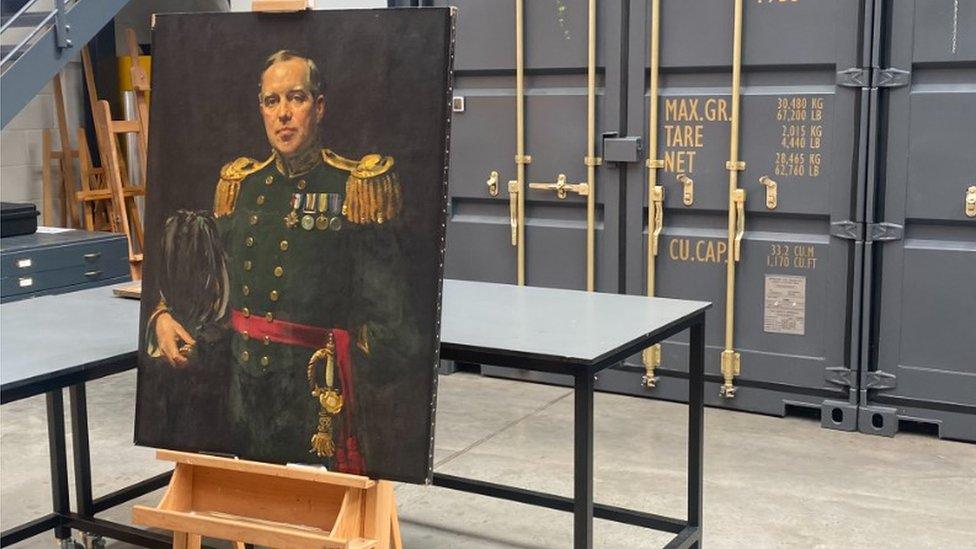
The Carlisle studio restores and conserves artworks from across the world

Follow BBC North East & Cumbria on Twitter, external, Facebook, external and Instagram, external. Send your story ideas to northeastandcumbria@bbc.co.uk, external.
- Published17 August 2021
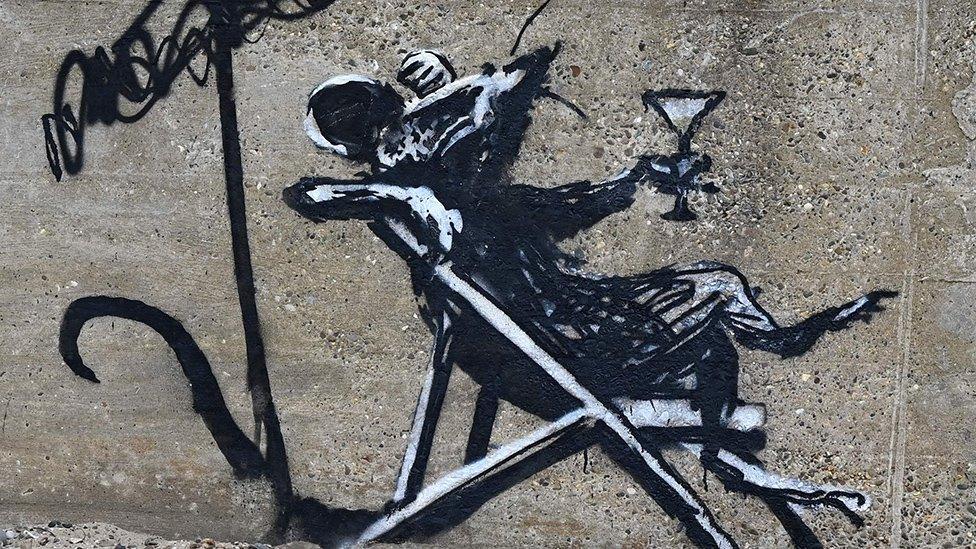
- Published20 October 2023

- Published11 August 2018
